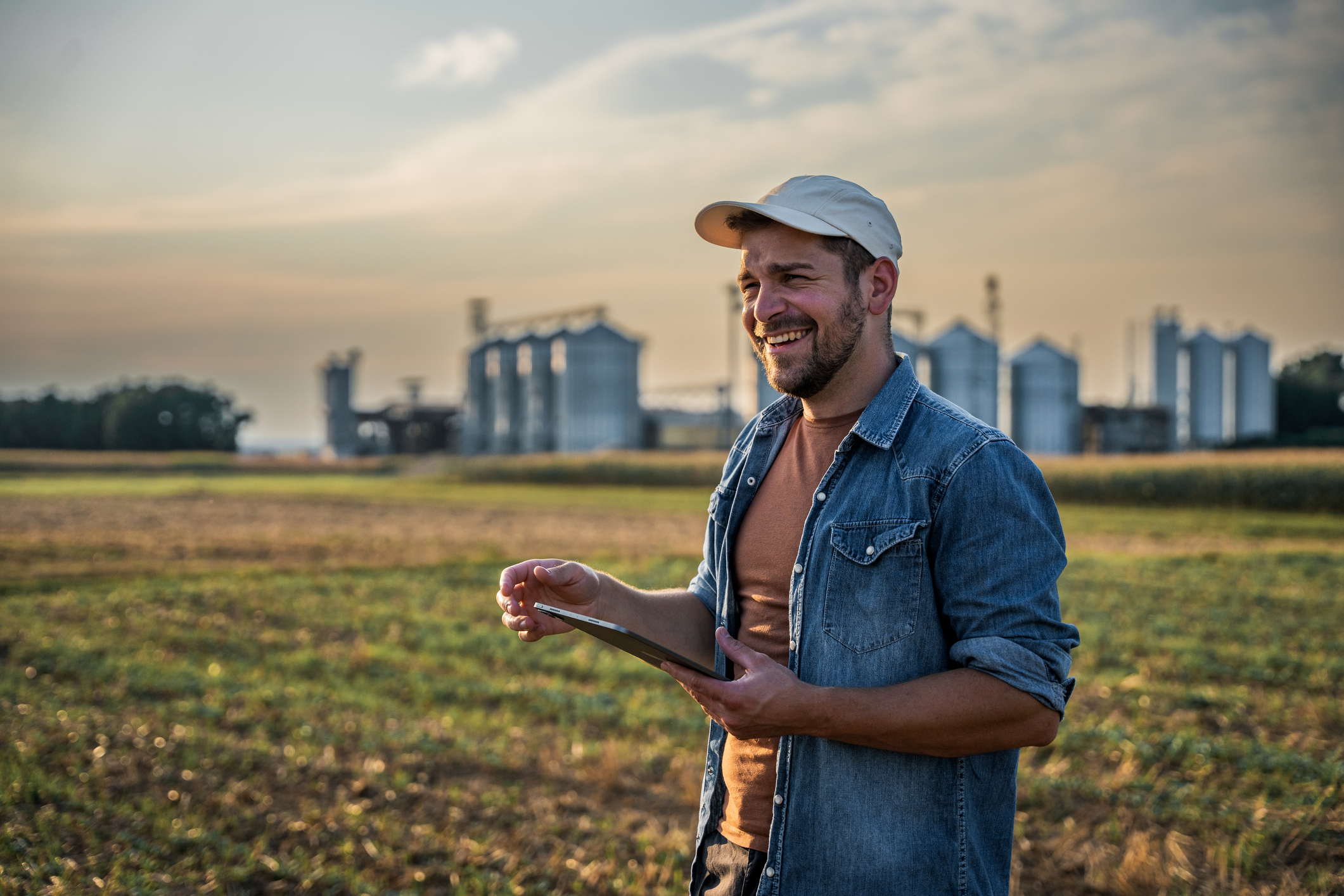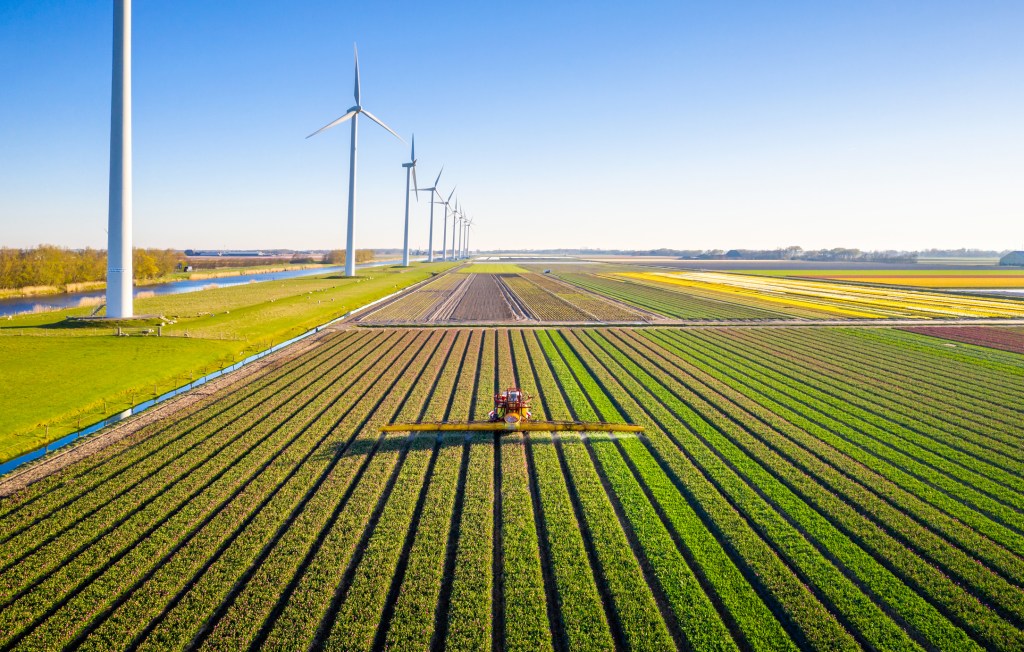New alliance creating a system to incentivize Canadian farmers for climate smart agriculture

Published November 27, 2023 • 5 Min Read
Net zero targets and talk now infiltrate communication channels across Canada – from advertising and social campaigns, in conference hall and boardrooms, and through mainstream media. The targets are set, but for farmers who are sustainable by nature and necessity, the path forward may feel a little like trudging through a muck-filled field at harvest after a late-season downpour. You have to go in, it’s just not clear how you’ll get through.
A new Canadian collaboration is looking at ways to reduce greenhouse gas emissions along the entire Canadian agricultural supply chain, starting in the farm field. The Canadian Alliance for Net Zero Agri-food (CANZA) formed in October 2023 and includes companies across the agricultural landscape. They’ve set a goal to reduce emissions in the agricultural sector in Canada by 50 megatons by 2030 and 150 megatons by 2050.
Mohamad Yaghi knows it’s a big ambitious goal, and that’s why he’s excited about how Canadian farmers can be remunerated for their climate smart agricultural practices. Yaghi is the RBC Agriculture and Climate Policy Lead, sits on the RBC Climate Action Institute and collaborates with RBC’s Senior Vice-President John Stackhouse who’s on the CANZA operating committee.
“Canada has 155 million acres of farmland, and if we find ways to effectively use this as a carbon sink, we could sequester 35 to 38 megatons of carbon or about 25% of projected 2050 emissions,” says Yaghi. “That is a huge opportunity, but we need to start by finding ways to compensate producers.”
That’s where CANZA is kicking off its efforts. The new alliance has plans for five key workplans – areas of emphasis with actionable activities to reduce emissions – and the first big one is how to define, quantify and compensate farmers for capturing carbon in the soil.

Filling the carbon sink with compensation
“What we are missing in Canada right now is a precise and standardized way to accurately measure and monitor the amount of carbon that soil is able to sequester, as well as the means to pay producers for this ‘public’ service,” says Yaghi.
CANZA started its first pilot project on carbon sequestration with Kristjan Hebert of Hebert Grain Ventures in Saskatchewan to focus on simple and accurate ways to measure and monitor soil carbon. When there is an accepted way to measure it, the value of carbon as a soil asset can take shape.
“Kristjan has been a pivotal part of this first project, providing the time and space to use technology to measure soil carbon as we uncover the best way to incentivize farmers to be paid and acknowledged for sequestering carbon in their farm fields,” says Yaghi.
Then what Canada needs, according to Yaghi, are clear rules to get the carbon credit market off the ground. “Canada is definitely in the lead for sustainable agricultural practices, but this position is at risk if we don’t act now and figure out how to build a transparent and voluntary carbon market.”
Yaghi estimates Canada is about 10 years behind the U.S. in the carbon game as they already have a more defined monitoring, measuring and reporting verification system for agriculture. “The U.S. is investing in climate smart projects that farmers can access for no-till, cover crops and other sustainable practices that reduce GHG emissions and capture soil carbon,” says Yaghi. These practices aren’t new on Canada farms, we just don’t have a way to compensate farmers for them.

Who pays for sustainable agriculture?
During higher inflationary times, and the challenges of rising food prices for many consumers, on-farm incentives for carbon are not expected to be paid out at the grocery store. “CANZA has engaged with the supply chain because we are expecting stakeholders to step up their contributions to net zero to help producers participate in this whole system,” says Yaghi. “That’s what CANZA is trying to establish and while there’s lots of work to be done, it’s really exciting to be working and talking about a new way to acknowledge the critical role that farmers have in net zero. We want to provide solutions – and there won’t be a one size fits all – to have farmers paid for the public good they provide towards net zero.”
Climate smart practices that increase carbon sequestration also bring higher yields, fewer greenhouse gas emissions and better returns for farmers. In the short term, they may need support for upfront costs and potential yield risk as they make changes to on-farm practices.
For RBC, the importance of being in the sustainable agriculture/net zero landscape is all about innovation. “An innovative agriculture sector keeps Canada innovative, and climate smart agriculture is one of the biggest economic and innovation opportunities for farmers in generations,” says Yaghi.
CANZA is also looking at biodigesters as the second area of focus. Through a national biodigester network, they plan to develop a roadmap for how producers can collaborate on the use of the technology in high emission locations across Canada. Digesters are an expensive investment and CANZA is looking for ways to create market incentives for building a network of agricultural biodigesters.
Yaghi expects CANZA’s soil carbon sequestration and biodigester projects will have results in the next two to five years. “We really want to nail these first two projects to gain momentum, make a difference and show the agricultural sector we are serious about providing real tools, incentives and innovations to support net zero practices.”
CANZA is an initiative of the Smart Prosperity Institute and the Natural Step, and includes partners RBC, Nutrien, Loblaw Companies Limited, McCain, Maple Leaf, Arrell Food Institute and BCG. More information is available at canza.ca.
This article is intended as general information only and is not to be relied upon as constituting legal, financial or other professional advice. A professional advisor should be consulted regarding your specific situation. Information presented is believed to be factual and up-to-date but we do not guarantee its accuracy and it should not be regarded as a complete analysis of the subjects discussed. All expressions of opinion reflect the judgment of the authors as of the date of publication and are subject to change. No endorsement of any third parties or their advice, opinions, information, products or services is expressly given or implied by Royal Bank of Canada or any of its affiliates.
Share This Article





